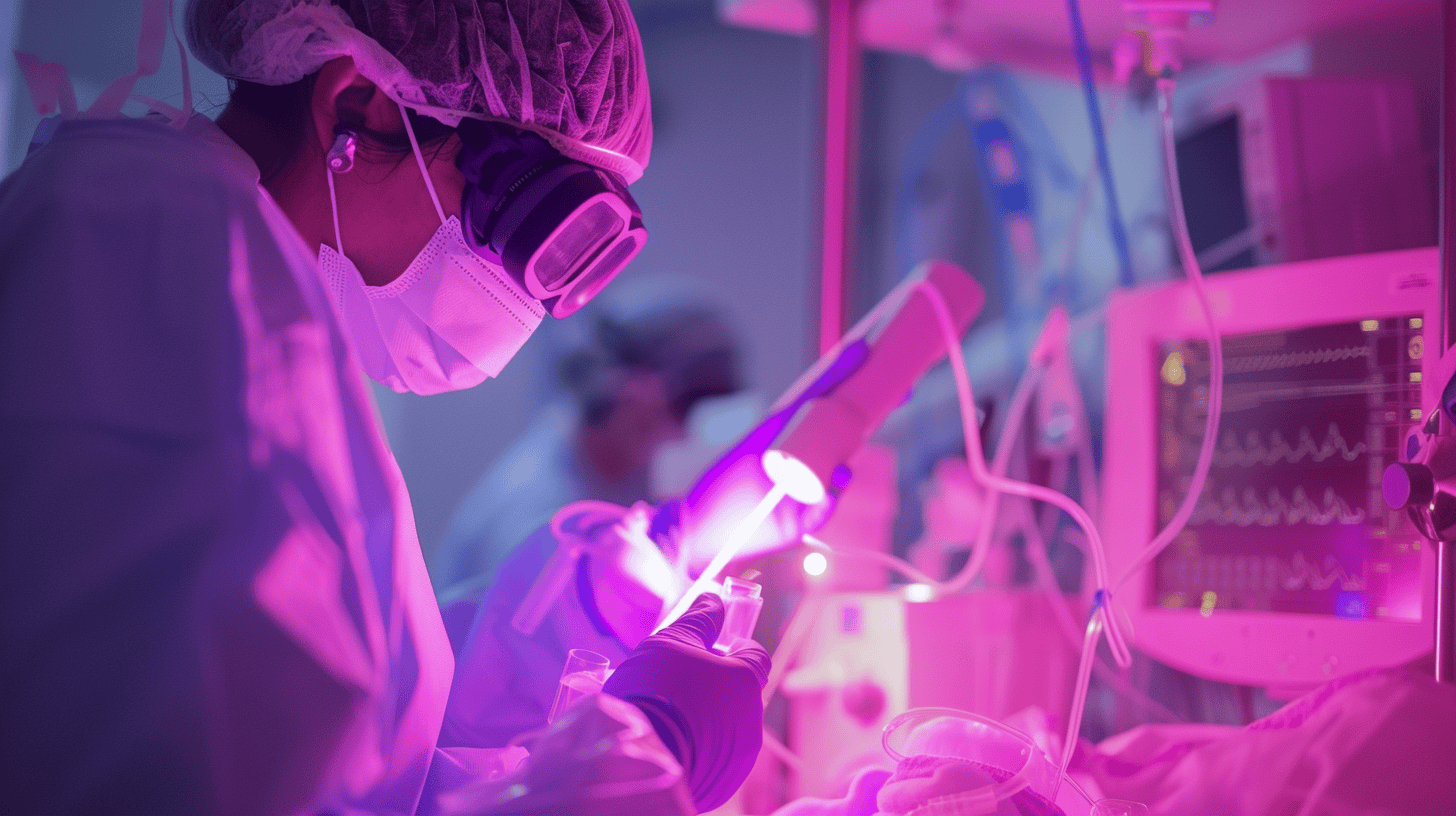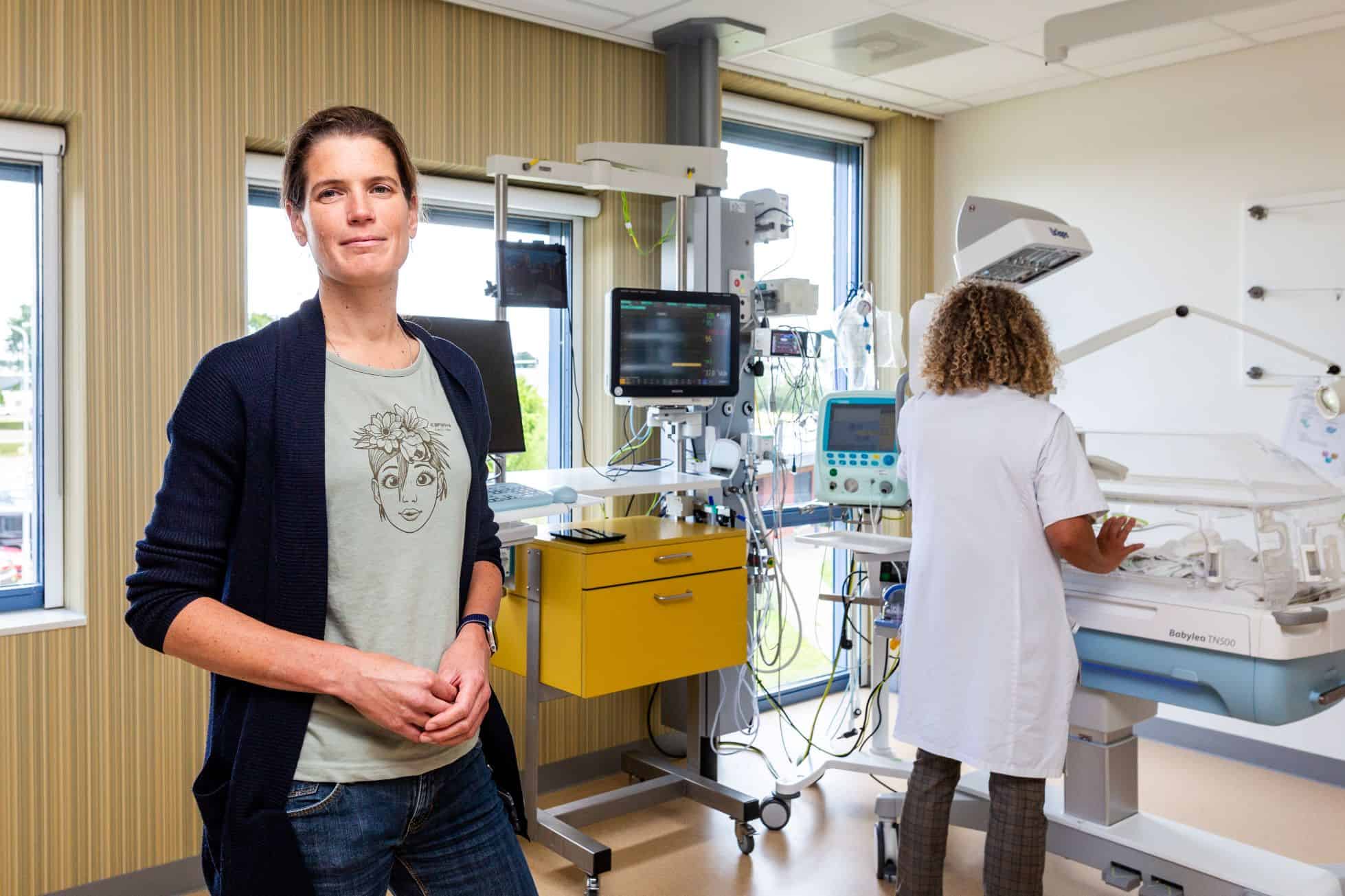
One in 50,000 newborns suffers from congenital hyperinsulinism (CHI). This is a genetic disorder in which the insulin cells of the pancreas, called beta cells, secrete too much insulin. Excess insulin causes low plasma sugar (hypoglycemia) or low blood sugar. Low blood sugar can be hazardous because the brain needs a constant source of sugar. If the brain doesn’t get the sugar it needs, it can lead to seizures, brain damage, and possibly death. Laser light therapy is a new potential care path.
Why this is important:
Dealing with hyperinsulinism is a heavy burden to deal for parents and acquaintances of babies affected by this disease, which can result in permanent brain damage. Light therapy can possibly help treating this disease.
Radboud University Medical Center (RUMC), is leading an international consortium, working on the LightCure project, which aims to pioneer a novel treatment for CHI using laser light therapy. To date, CHI treatment has primarily focused on managing low glucose levels, which can have serious side effects and do not address the root cause of the condition.
There are two forms of CHI, focal and diffuse, with the focal form being treatable by the surgical removal of the affected area of the pancreas. However, the diffuse form is more complex, affecting the entire pancreas, and until now, the only treatment option has been near-total pancreatectomy, which comes with the risk of inducing diabetes and requiring lifelong management of blood glucose levels
Selective tracer
Funded by an €8 million grant, LightCure is particularly focused on addressing the diffuse form of CHI, where pathogenic beta cells are spread throughout the pancreas, rendering surgery an unfeasible solution.
The core of LightCure’s innovation lies in a tracer, devised by Professor Martin Gotthardt, which targets these beta cells. This tracer, a small protein named exendin, binds selectively to the beta cells. The project’s goal is to couple this tracer with a light-sensitive substance, thus enabling the targeted treatment of beta cells when activated by laser light. The approach promises to be a significant departure from traditional drug therapies, offering a treatment that is not biologically active until illuminated.

Paradigm shift
The LightCure project represents a paradigm shift in treating CHI. By utilizing the properties of laser light, which can penetrate approximately one centimeter deep into human tissue, the treatment can reach and target the malfunctioning beta cells. This specificity is crucial, as it minimizes the impact on healthy cells and reduces the risk of side effects typically associated with more systemic treatments.
Before applying this therapy to infants, the consortium will initially focus on treating insulinomas in adults. Insulinomas are tumors that, like CHI, cause an overproduction of insulin. The successful treatment of insulinomas will pave the way for applying the therapy to babies with CHI. The process will require precision, as endoscopic tools will likely need to be modified to ensure that the laser light can be delivered effectively to the pancreas.
The impact on families and future applications
CHI is not only a medical challenge but also a considerable psychological and social burden for the families affected. The LightCure consortium, which includes Congenital Hyperinsulinism International, a patient association, recognizes the importance of addressing the psychosocial consequences of the disease. They are committed to reducing the disease’s burden on patients and families, which often includes constant vigilance to manage glucose levels and prevent hypoglycaemic episodes.
The implications of LightCure extend beyond CHI. Professor Gotthardt notes that the platform developed for this treatment could be adapted for various other conditions. By altering the substances that bind selectively to targeted cells, this method of treatment could potentially be applied to a range of diseases, marking a significant advance in precision medicine.

Previous research on light therapy
While the implementation of light therapy in treating CHI is novel, the concept of using light to influence bodily functions is not entirely new. Research has shown that light therapy can have positive effects on mood and insulin sensitivity in patients with Type 2 diabetes and depression. Although the study does not directly correlate with CHI treatment, it does provide a foundation for understanding how light can impact insulin-related processes in the body.

